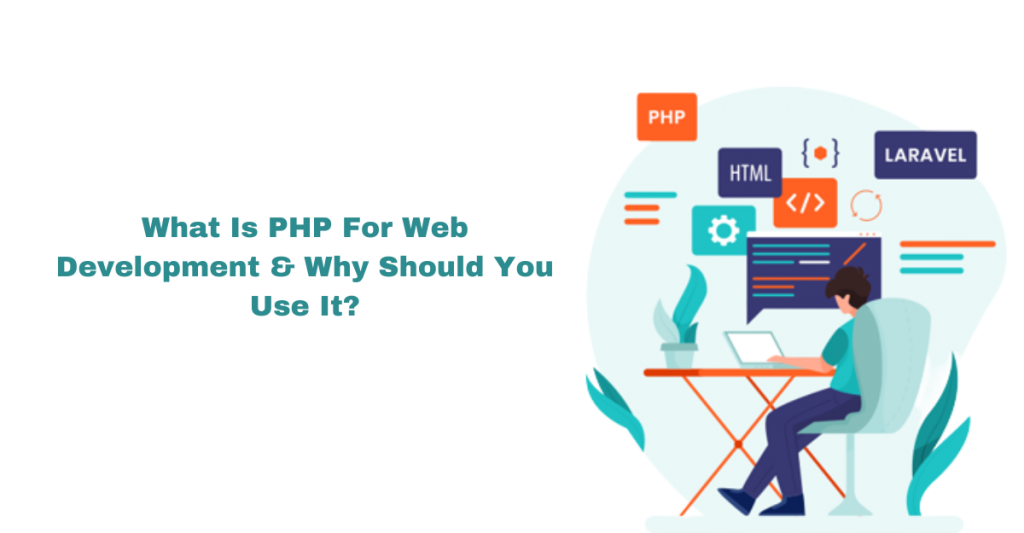Are you interested in web development? Do you want to create dynamic, interactive websites that engage users and drive traffic? If so, then PHP may be the programming language for you. In this blog post, we’ll explore what PHP is and why it’s such a popular choice among developers. From its origins as a server-side scripting language to its current role in powering some of the world’s most popular websites, we’ll show you how PHP can transform your web development projects. So whether you’re new to coding or an experienced developer looking for a powerful toolset, keep reading to learn more about PHP!

What Is PHP?
PHP is a widely used, open-source scripting language used for website development and can be embedded into HTML. PHP code is executed on the server, which results in the generation of dynamic web page content that can be displayed in the user’s web browser. It can also be used to create interactive forms, shopping carts, and forums.
PHP is a powerful tool for creating dynamic and interactive websites. In order to use PHP, you need to have a server that can interpret PHP code and generate the resulting web page content. Most web hosting providers offer PHP support, and many provide easy-to-use tools for creating and editing PHP files.
If you’re new to website development or are looking for an easy-to-use scripting language that can produce professional results, PHP is an excellent choice.

How Does PHP Work?
PHP scripts, which are executed on the server, can be incorporated into HTML code to produce dynamic web pages. Subsequently, the outcomes are transmitted to the client.
When a PHP script is executed, it first starts with the preprocessing phase. This phase includes any initializations or compiling that needs to be done before the script can start running. Once the preprocessing phase is complete, the script enters the main execution phase. In this phase, the script will execute line by line until it reaches the end. Finally, once the script has finished executing, it will enter the post-processing phase. This phase includes any cleanup or finalization that needs to be done before the script is complete.
What Are the Benefits of Using PHP?
PHP is a widely used open-source scripting language that is specifically designed for web development. There are several benefits of using PHP for web development, including:
- Easy to Learn: PHP is relatively easy to learn compared to other programming languages, making it a great choice for beginners.
- Free and Open-Source: PHP is an open-source language, which means that it is freely available for use and modification.
- Cross-Platform Compatibility: PHP is a cross-platform language, which means that it can be run on different operating systems like Windows, Linux, and MacOS.
- Large Community: PHP has a large and active community of developers who constantly contribute to its development and maintenance.
- Integration with Other Technologies: PHP can be easily integrated with other technologies like HTML, CSS, JavaScript, and various databases.
- Speed and Performance: PHP is a fast and efficient language, which means that it can handle a large number of requests and transactions with ease.
- Scalability: PHP is highly scalable and can handle large-scale applications with ease.
- Security: PHP has several security features built-in to prevent common web security vulnerabilities like SQL injection and cross-site scripting attacks.
What Are the Drawbacks of Using PHP?
While PHP is a popular and widely used language for web development, there are some drawbacks to using it. These include:
- Inconsistency: PHP has a large number of built-in functions and features, which can sometimes lead to inconsistency and confusion.
- Weak Typing: PHP is a weakly typed language, which means that it may allow implicit conversions between different data types, leading to unexpected behavior.
- Security Vulnerabilities: Although PHP has built-in security features, it is still susceptible to security vulnerabilities if not used properly.
- Poor Object-Oriented Support: PHP’s object-oriented programming support is not as robust as other languages like Java or C#.
- Poor Performance: PHP’s performance may not be as fast as some other languages like C++ or Java, particularly for CPU-intensive tasks.
- Lack of Built-In Multithreading Support: PHP does not have built-in multithreading support, which may limit its ability to handle concurrent requests efficiently.
- Difficult to Debug: PHP’s error reporting can be difficult to understand, especially for beginners.
Who Should Use PHP?
PHP is a versatile scripting language that is well-suited for web development. It can be used for developing small websites or large-scale web applications. PHP can be used on all major operating systems, including Linux, Windows, and Mac OS X.
PHP is easy to learn for beginners and has a wide range of functions for more experienced developers. You can find many free tutorials and code examples online.
Most web hosting providers support PHP, so it is easy to set up a development environment. You can also install PHP on your own computer if you want to develop it locally.
How to Get Started With PHP
Are you new to web development and wondering what PHP is all about? In this article, we’ll give you a brief introduction to PHP and explain why it’s a popular choice for web development.
PHP is a scripting language that operates on the server side and is utilized to develop dynamic web pages. It is possible to embed PHP code within HTML code, and the resultant output of the PHP code is visible in the browser. PHP programming can enable users to establish connections with databases, manipulate form data, produce dynamic content, and provide numerous other functions.
To get started with PHP, you need a web server that supports PHP and a text editor. We recommend using XAMPP for your local development environment, which includes Apache, MySQL, and PHP. To install XAMPP, follow the instructions on their website. Once XAMPP is installed, you can start writing PHP code in your text editor and save the files with a .php extension.
When you’re ready to test your code, open up the XAMPP Control Panel and start the Apache and MySQL services. Then open up your browser and navigate to http://localhost/yourfile.php. You should see the output of your code on the screen.
Now that you know how to get started with PHP, check out our other articles on web development for more tips and tutorials!
Conclusion
PHP is a popular and versatile language for web development, with many benefits, including ease of use, cross-platform compatibility, integration with other technologies, scalability, and security features. While it does have some drawbacks, these can be mitigated with proper usage and a robust ecosystem of tools and frameworks available. As for the future of PHP, it is expected to continue to evolve and improve with new versions, updates, and features, further cementing its place as a staple language for web development.
I am a Tech geek and blogger, a seasoned freelancer, and my hobby is to enlighten my views and skills that will helpful for new inductions of the industry.